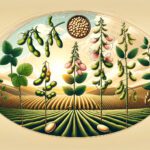Soybean (Glycine max) is a crop of great global importance, and a thorough understanding of its phenological stages is crucial for optimizing its agronomic management. This article offers a detailed exploration of each phase of soybean development, from planting to maturity, providing fundamental information for students and professionals in agronomy.
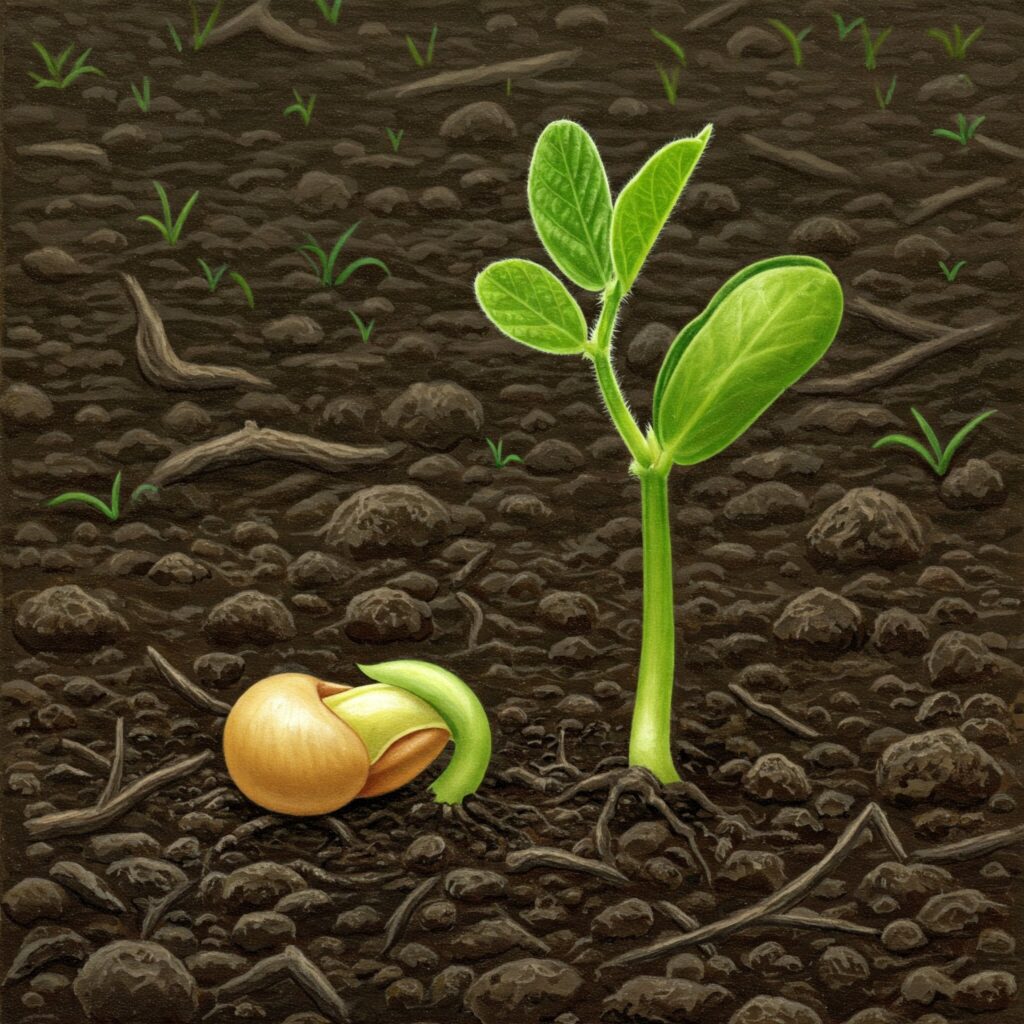
Breaking Down the Stages of Soybean Development
Germination and Emergence (VE-V1): The Awakening of the Seedling
The initial stage of the soybean life cycle encompasses seed germination and seedling emergence through the soil surface. To ensure success in this phase, it is essential to have a well-prepared soil and optimal moisture and temperature conditions.
Vegetative Development (V2-V5): Building the Plant Structure
Once emerged, the soybean enters a period of rapid vegetative growth. During this stage, the plant develops its leaves, stems, and a robust root system. Proper soil management and balanced nutrition are fundamental pillars for optimal plant development.
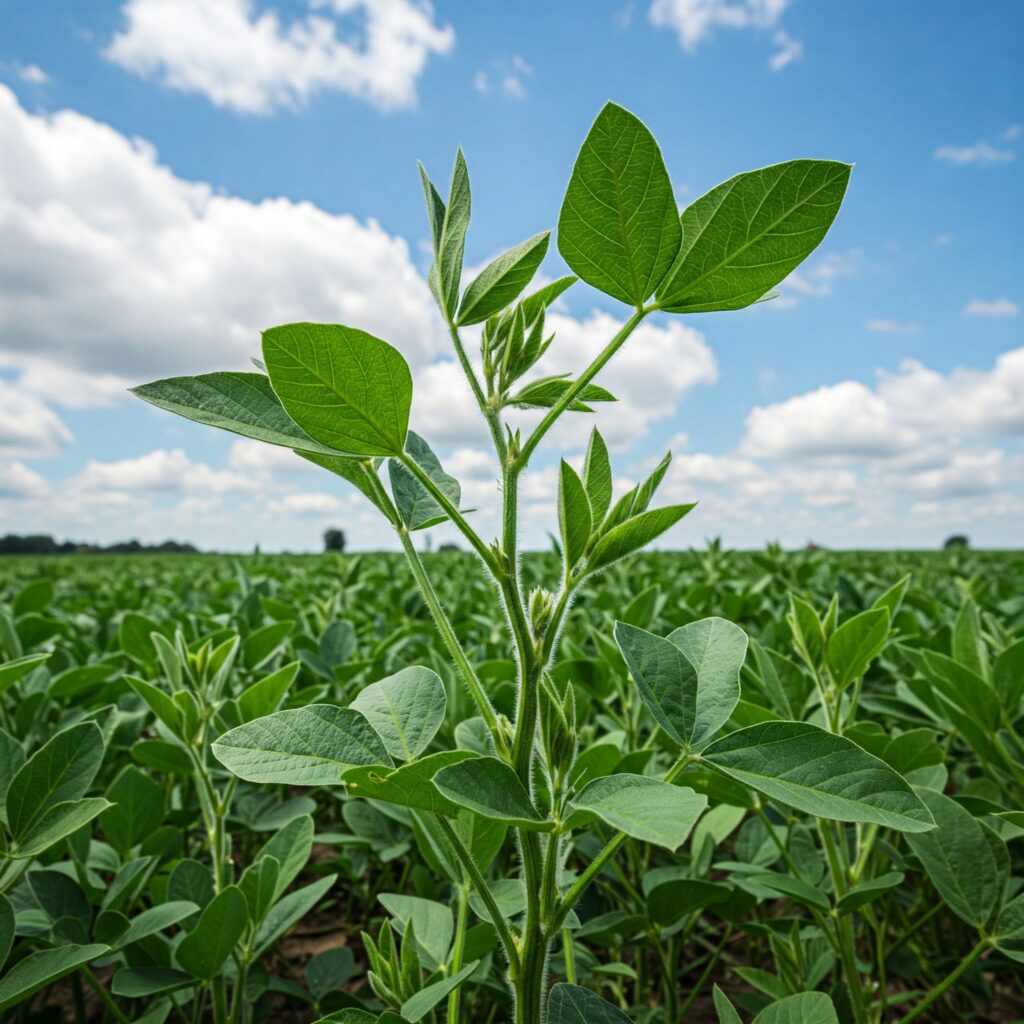
Flowering Onset (R1-R2): The Beginning of Reproduction
The appearance of the first flowers at the nodes of the plant signals the beginning of the reproductive stage of soybean. This phase is particularly sensitive, as unfavorable environmental conditions can negatively impact fertilization and subsequent pod formation.
Pod and Seed Development (R3-R5): The Formation of Yield
In this stage, the fertilized flowers transform into pods, and within them, the seeds begin their development and filling. Adequate irrigation and effective protection against pests and diseases are crucial to ensure a good harvest yield.
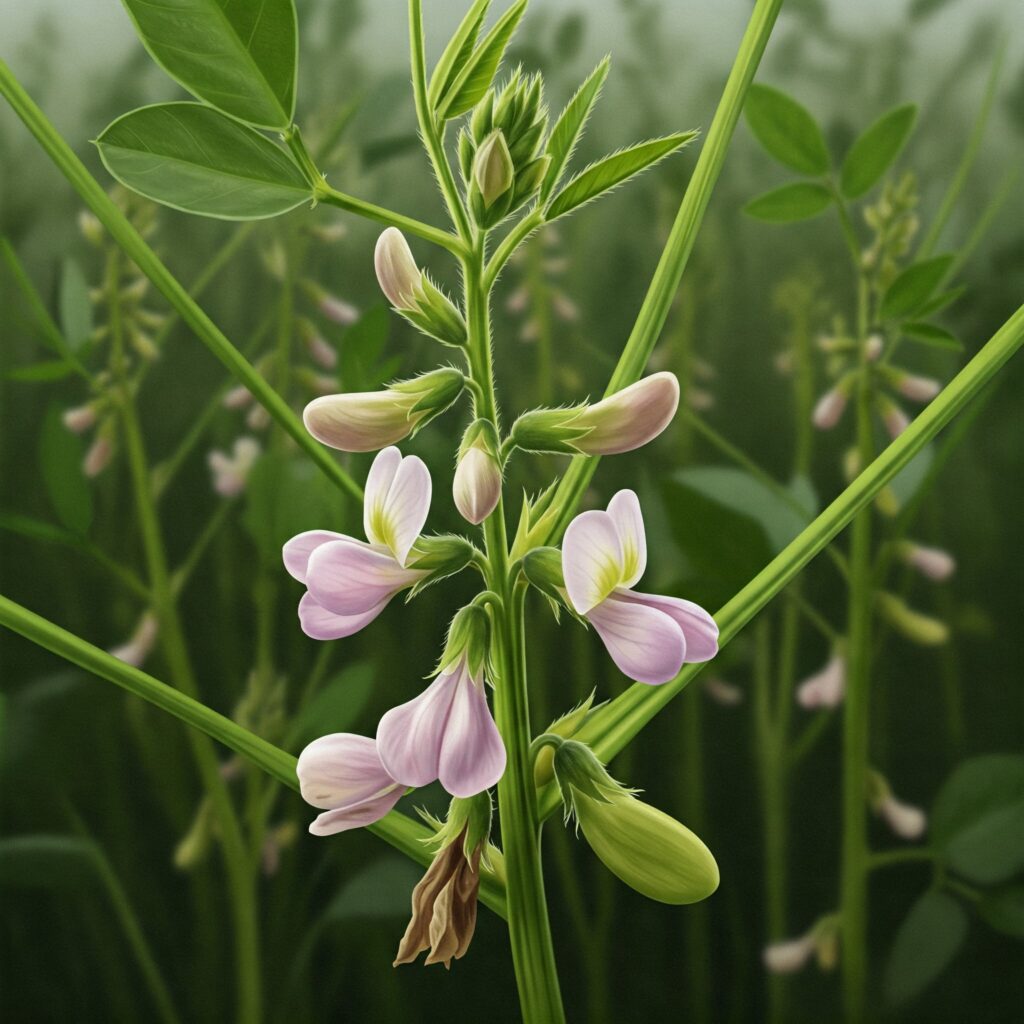
Maturity and Preparation for Harvest (R6-R8): The Closing of the Cycle
The final stage of the soybean life cycle is characterized by the culmination of seed filling, and the plant prepares for harvest. Identifying the optimal time for harvesting is essential to maximize both the quality and yield of the crop.
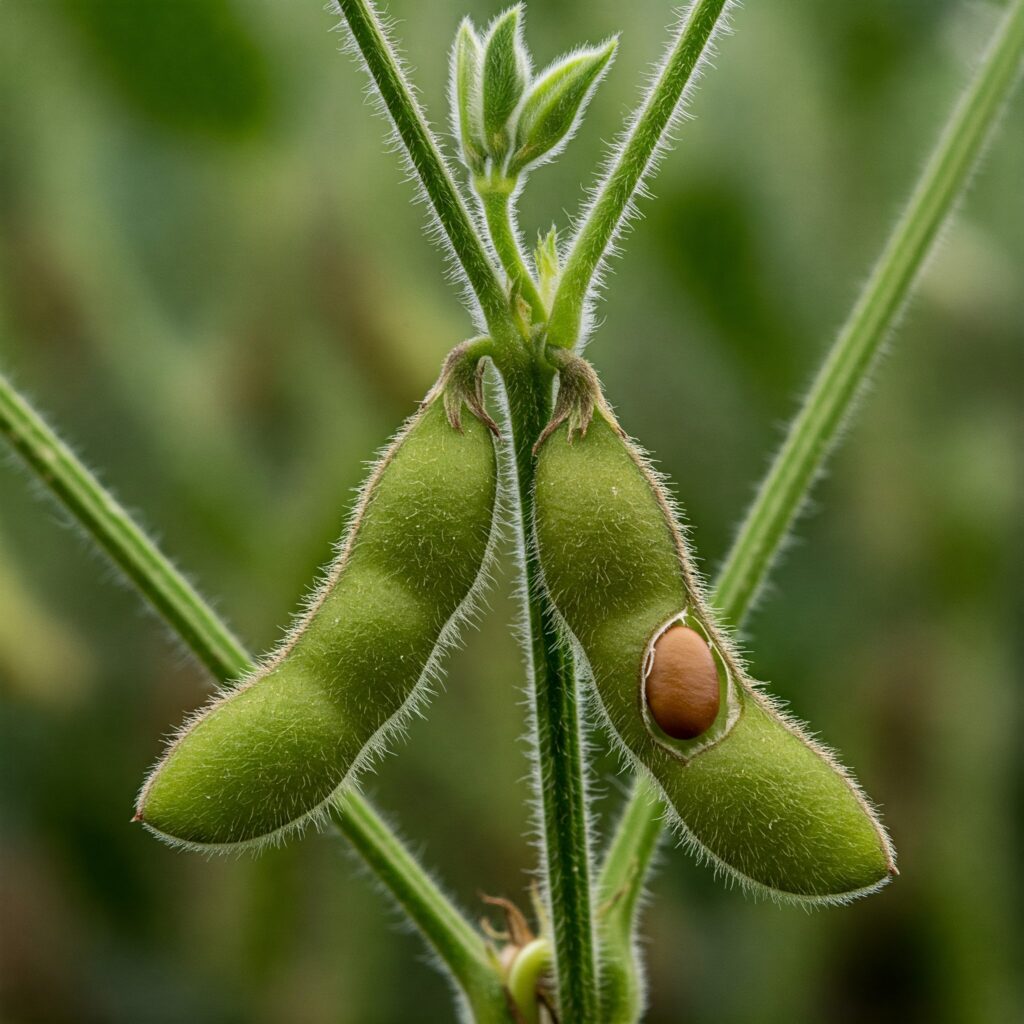
Conclusion
A comprehensive understanding of the phenological stages of soybean is an indispensable tool for the efficient agronomic management of this important crop. Understanding each phase of development allows agronomists to make informed decisions about irrigation, fertilization, and pest control, which translates into an optimization of soybean production and quality.
Nutrient recommendations for soybean cultivation
| Stage/Sub-stage | Nutrients | Recommended dose |
| Soil preparation and planting | Nitrogen (N), Phosphorus (P), Potassium (K) | N: 40-80 kg/ha, P: 30-60 kg/ha, K: 40-80 kg/ha |
| Calcium (Ca), Magnesium (Mg) | Ca: 20-40 kg/ha, Mg: 10-30 kg/ha | |
| Micronutrients (Fe, Mn, Zn) | According to soil analysis | |
| Germination and emergence | Nitrogen (N), Phosphorus (P), Potassium (K) | N: 20-40 kg/ha, P: 10-20 kg/ha, K: 20-40 kg/ha |
| Calcium (Ca), Magnesium (Mg) | Ca: 5-10 kg/ha, Mg: 5-10 kg/ha | |
| Micronutrients | According to soil or foliar analysis | |
| Vegetative development | Nitrogen (N), Potassium (K) | N: 60-100 kg/ha (split application), K: 60-100 kg/ha (split application) |
| Phosphorus (P) | P: 30-60 kg/ha (split application) | |
| Calcium (Ca), Magnesium (Mg) | Ca: 20-40 kg/ha, Mg: 10-30 kg/ha | |
| Micronutrients | According to soil or foliar analysis | |
| Flowering and pod formation | Nitrogen (N), Phosphorus (P), Potassium (K) | N: 80-120 kg/ha, P: 40-80 kg/ha, K: 60-100 kg/ha |
| Calcium (Ca), Boron (B) | Ca: 20-40 kg/ha, B: 1-2 kg/ha | |
| Micronutrients | According to soil or foliar analysis | |
| Pod filling and maturation | Nitrogen (N), Potassium (K) | N: 60-100 kg/ha, K: 60-100 kg/ha |
| Phosphorus (P) | P: 30-60 kg/ha | |
| Calcium (Ca), Magnesium (Mg) | Ca: 20-40 kg/ha, Mg: 10-30 kg/ha | |
| Micronutrients | According to soil or foliar analysis |
Note: These recommendations are general and should be adjusted to the specific conditions of your soil, climate, soybean variety, and agronomic practices. It is essential to carry out periodic soil and foliar analyses to determine the precise nutrient doses. Always follow local regulations and the guidance of agricultural professionals.
Keywords: Soybean phenological stages, soybean germination, soybean vegetative development, soybean flowering, soybean pod formation, soybean maturity, soybean harvest, soybean agronomic management, soybean nutrition.
 AgronoBlog – Agriculture Blog
AgronoBlog – Agriculture Blog 